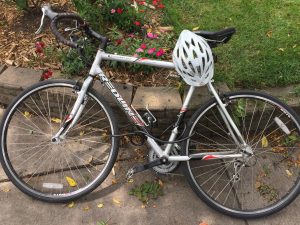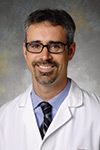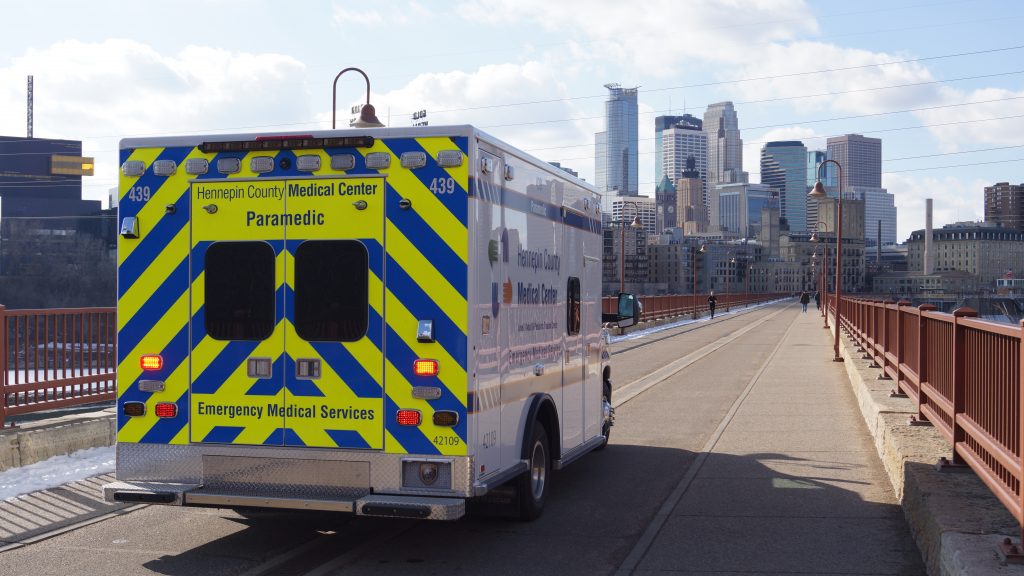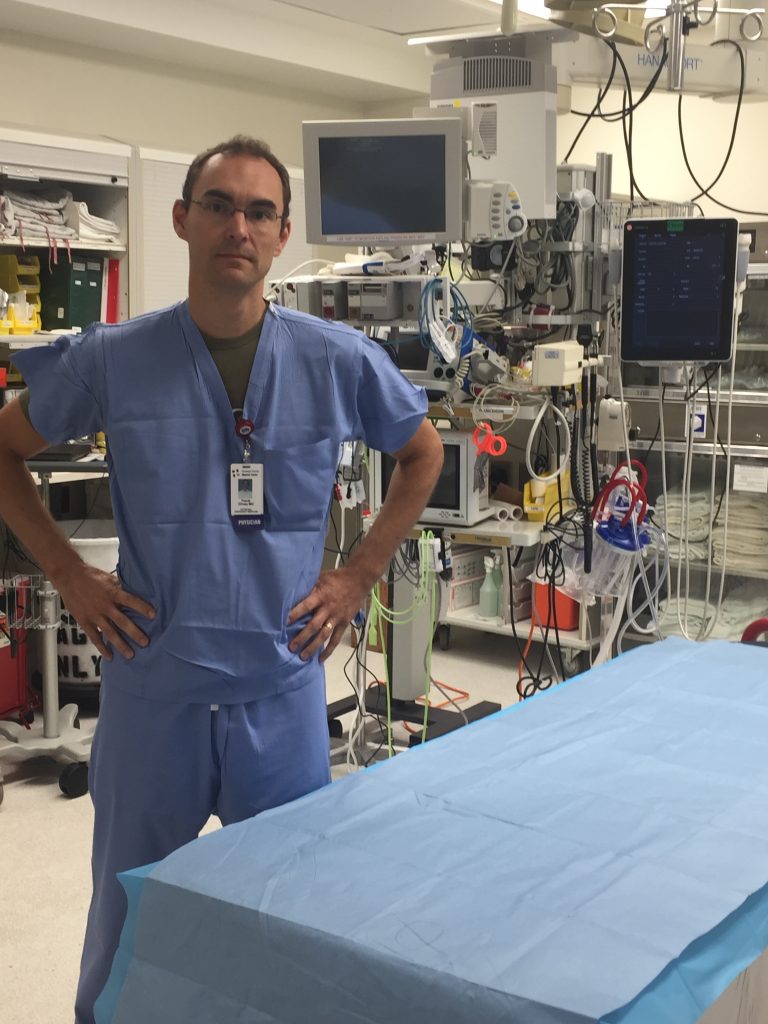
I have a colleague at Hennepin County Medical Center who is into cool stuff. He does a lot of biking, he does backcountry skiing in British Columbia, he raises bees in his Minneapolis backyard and makes honey from those bees – honey which has won awards at the Minnesota State Fair, no less.
And he tells a good tale. His name is Aaron Rutzick. One time he told me this one about a bike crash he had when in real-time he realized that his helmet was saving him as he hit the pavement with his head . . .
“I was riding down 3rd Ave in south Minneapolis at night, I think I hit a pothole or something in the road because I was going pretty fast and just went over my handle bars. there I was, upside down, and yes … using my helmet. I slid to a stop in front of some hipster bikers drinking beer. They were sympathetic and seemed to have a keen understanding of that moment. I was OK and took off for home before everything started hurting. I’d say in general, I’m a pretty experienced
commuter, riding most days in all seasons to get to work since 2001. Thankfully, no car was involved, but it was a reminder that a bike crash could happen in a split second – so BE CAREFUL. It didn’t keep me from riding, I’m certainly aware that you have to be on your game, especially with cars. The Twin Cities has really developed its bicycle lanes over the last 10-15 years, and is one of the leading cities in the nation for supporting safe biking and bike culture. Great place to live for this.” – Dr. Aaron Rutzick
I especially like the image of Aaron flying over his handlebars in front of “hipster bikers drinking beer.” Sort of sums up Minneapolis life. I wonder if any of the hipsters looked like this:

By Lorena Cupcake [CC BY 2.0 (http://creativecommons.org/licenses/by/2.0)], via Wikimedia Commons
Summertime emergencies
This past week’s Healthy Matters radio broadcast on WCCO 830 AM focused on emergency medicine and summertime injuries, just like the injury that Dr. Rutzick did NOT get because he was wearing his bike helmet.
My guest, Dr. Nicholas Simpson, and I broke the show down into two parts. In the first half I asked Nick to describe the inner workings of an Emergency Department and how things work when you call 911 from ambulance to chopper to the Emergency Room. In the second half, we touched on a few summertime emergencies that he’s seeing a lot of this time of year in Minnesota’s largest Emergency Department.

Dr. Nicholas Simpson in the WCCO studios
Here’s Dr. Simpson in the studio with me. He’s an Emergency Department doctor at Hennepin County Medical Center, where I work. HCMC is a Level 1 Adult and Pediatric trauma center and one of the nation’s premier centers for emergency care. Since I am in the hospital every day and have spent lots of time in the Emergency Department, I think I may sometimes forget that the care of emergencies is both awesome and terrifying.
In this post I’ll talk about a busy Emergency Department and show you some of the faces of the best trauma care in Minnesota. In the coming days I’ll do a follow up about summertime emergencies. In the meantime, I encourage you to listen to the podcast of the show with Dr. Simpson. Click the logo here to get to the podcast – it’s easy, has no commercials, and you can listen at your leisure on your own device. Give it a try!
(Healthy Matters show #444, July 9, 2017)
What’s a Level I trauma center? Why should I care?
HCMC and other Level I trauma centers are equipped to provide the most comprehensive, high-level care for any type of trauma that may occur. Simply put, there is no place you can go with better services, better resources, better training, better care no matter what has happened to you. That is reassuring.

Dr. Chad Richardson
Level I trauma centers have a surgeon in the hospital around the clock (24/7). I know the trauma surgeons at HCMC and can attest that yes, they are literally ALWAYS there. And I mean literal always. Like every minute of every day. I saw Chad Richardson in the hallway just today. He runs the trauma surgery program. These are the surgeons you want operating on you when things are scary and every minute counts. They have seen it before.
But it’s not just the trauma surgeons. Level I trauma centers like HCMC have emergency doctors (also there round the clock every single day), neurosurgeons, orthopaedic surgeons, anesthesiologists . . . you name it . . . they are there in an instant to care for you. And they do it every day, hundreds and thousands of times per year. So whatever injury has befallen you, rest assured that these doctors have seen something like it before. You’re in good hands.
For in-depth discussion of trauma center designations, check out this site from the American Trauma Society.
Who comes to your door when you call 911?

Hennepin EMS Ambulance
Dr. Simpson is not your garden-variety emergency doctor. He is also trained in what we in the biz call “pre-hospital” care. That just means the care that occurs before you get to the hospital – like when the ambulance shows up at your door.
We talked on the air about the various levels of training for pre-hospital care, from First Responders to Emergency Medical Technicians to full-on Paramedics. I get lots of questions about training for these careers, and Dr. Simpson talked about that on the show. Conveniently for me, he’s also the Director of EMS training at HCMC. For more information on pre-hospital careers, click on the HCMC EMS training page here.
Drop in anytime, we’re ready for you
 Dr. Simpson and I talked about the latest addition to our downtown hospital – the new “helistop” which was constructed on the roof in 2015. It is the most state-of-art landing pad you’ll find, and some 350 times a year – nearly once a day – someone is flown to our rooftop. The place is heated to melt snow and ice, it is built to “float” above the actual rooftop to make for easier landings amid the buildings, and it is red with a huge while medical cross on it. Oh yeah, it is tucked safely away from skyscrapers and the glitzy USBank Stadium where the Vikings play just a block away! So even if you are not close by, you can get top-notch trauma care by air. Super cool.
Dr. Simpson and I talked about the latest addition to our downtown hospital – the new “helistop” which was constructed on the roof in 2015. It is the most state-of-art landing pad you’ll find, and some 350 times a year – nearly once a day – someone is flown to our rooftop. The place is heated to melt snow and ice, it is built to “float” above the actual rooftop to make for easier landings amid the buildings, and it is red with a huge while medical cross on it. Oh yeah, it is tucked safely away from skyscrapers and the glitzy USBank Stadium where the Vikings play just a block away! So even if you are not close by, you can get top-notch trauma care by air. Super cool.
Despite my queasiness with heights, here I am standing on the helipad.

For more facts about the helistop, click here.
The heart of it all . . the STAB room
Imagine those medical shows, like “ER” on TV, where a patient gets rushed into an emergency room on a gurney, blood all over the place, doctors and nurses and who knows all running around in a chaotic scene. Usually they are grabbing paddles to shock the patient, usually there is some shouting going on, and the scene looks altogether a bit unsettling.
Well, there is such a place in a Level I trauma center. Only it is not chaotic at all. It is high energy, yes. But chaotic? No.
The STAB room (pronounce that to rhyme with “Gabe” not “Gab” since it is short for “Stabilization”) at the HCMC Emergency Department can handle multiple patients at once, including adults and children who are in the most scary situations. Patients get brought here when their injuries or medical condition is the most severe.
I wish I could show you a video of an actual “STAB” in progress, but I can’t. Wouldn’t be fair to patients to show and also it doesn’t seem quite right. But I’ll describe it for you. When you get brought in by an ambulance or chopper to the STAB room, the doctors, nurses, and other health professionals are already in the room before you arrive (they were notified in advance). Each one has a job. One doctor runs the process. There is a highly skilled nurse in charge to see to it that any tests you need, any medications you require, any comforts you deserve, are all addressed. Someone draws blood. Someone performs x-rays, EKGs, or whatever tests you need. Someone calls for the various specialists to come so that you already have a surgeon, or a cardiologist, or an obstetrician . . . or whomever is an expert in your care . . . right there at your side.
 This is Dr. Travis Olives in the “STAB” room at HCMC. He’s one of the awesome team who care for you or your loved one when things get dicey. He let me take a picture of him between patients.
This is Dr. Travis Olives in the “STAB” room at HCMC. He’s one of the awesome team who care for you or your loved one when things get dicey. He let me take a picture of him between patients.
They are all there for a single purpose: to get you in stable condition so that you can move to the specific care you need. Whether it is a trauma, a heart attack, a stroke, a problem with your pregnancy, whatever . .. that is what happens in the STAB room. I have watched many “STABs” in progress at HCMC and I don’t think I’ve ever left the room unchanged.
So that’s a quick look at some faces and places in emergency care. Stay safe out there, but if you get hurt . . . we got ‘ya covered.
In my next post I’ll go over some of Dr. Simpson’s tips for staying safe this summer – about bike safety, heat safety, water safety . . . look for that in the coming days.
Also, subscribe to this blog by entering your e-mail below or at the top. Don’t worry, no spam or marketing will come your way. And follow me at @DrDavidHilden on Twitter.
David

